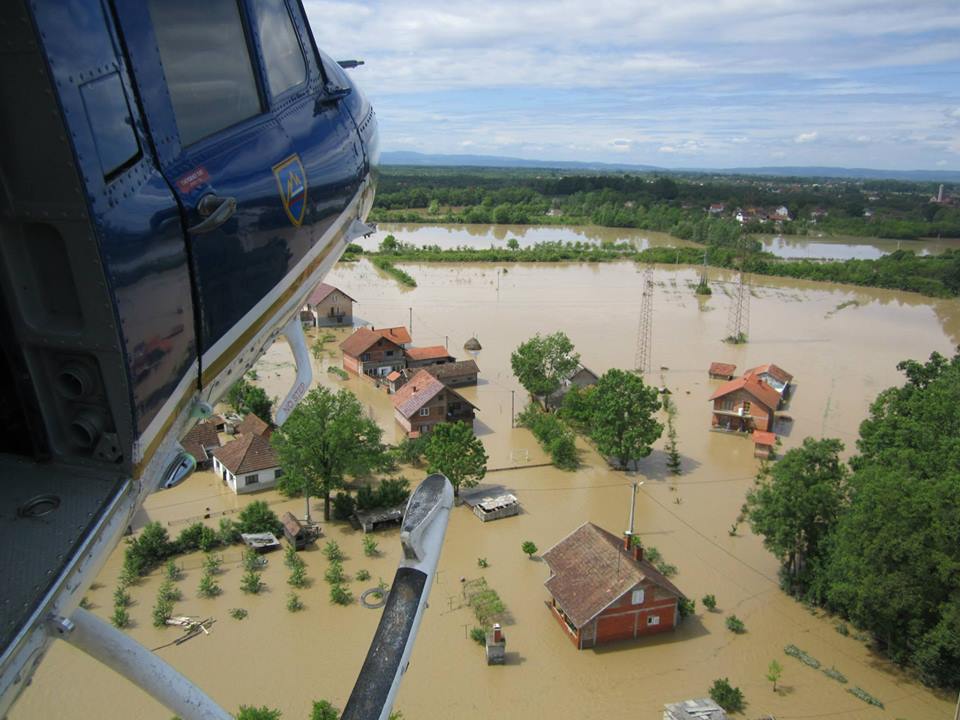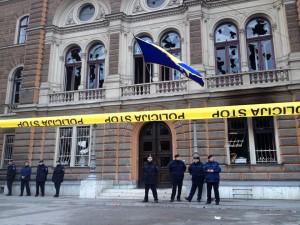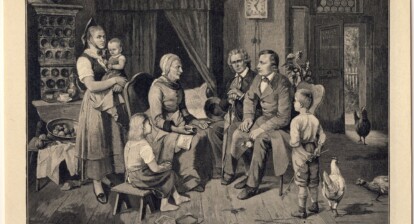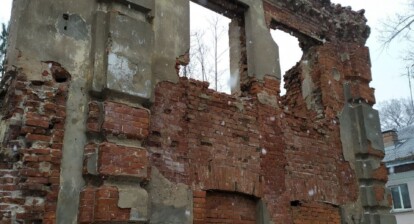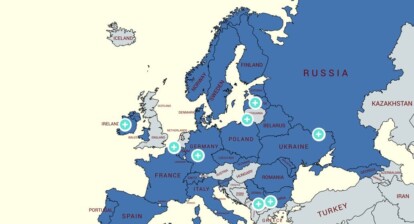Setting up state systems based on ethnicity or race can have positive effects argued Martin on the example of Singapore. However, dividing a people accordingly can have severe consequences for the social cohesion too, affecting school children as much as the political elites. The case of Bosnia-Herzegovina…
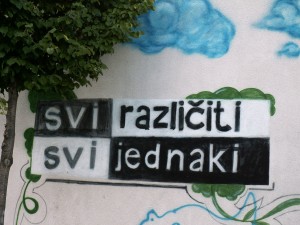
“All different / All equal” (photo: Jaime Silva)
“One of the things that I’ve been focused on as President is how we create an all-hands-on-deck approach to science, technology, engineering, and math”, says Barack Obama, whose administration has committed itself to support technology and innovation recognizing their essential part in securing economic growth and the well-being of society. Yet, when a 14-year-old boy tries to keep up the spirit of innovation and brings a self-made clock to school, he ends up being arrested by the police, as it happened to Ahmed Mohamed, whose homemade clock was mistaken for a bomb. News of the incident went viral and many prominent figures have supported Ahmed, while others such as the Louisiana Governor Bobby Jindal remarked that he was glad the police were careful.
Racial profiling is the discriminatory practice by law enforcement officials of targeting individuals for suspicion of crime, based on the individual’s background, such as ethnicity, religion or national origin. In Ahmed’s case this means: suitcase with strange wires plus Muslim background equals terrorist equals let’s arrest him.
The consequences of racial profiling are severe, not only for the individual but for society as a whole , as people lose their trust in the system and society is being divided into classes of people. So imagine a society where the state is officially practicing a sort of racial profiling, dividing the society into different groups, where the common vocabulary of politics includes terms like “constituent race”, “Ethnic Integration Policy” and “ethnic quotas”, as Martin reports.
In Singapore each citizen must be classified as Chinese, Malay, Indian or Others, which is stated in everyone’s identity card. Each particular race has an official race-language and race-religion. According to the “Ethnic Integration Policy” there are also “maximum ethnic limits for neighborhood”. In both cases the justification for action lies predominantly in ethnicity, religion or national origin. The wealth of Singapore has been so far supported by the harmony in society, but the system of classification and division bears the potential of a highly destructive political force. Thus, let’s switch to the case of Bosnia and Herzegovina, where the system is similar, but the results are horrifying.
The Case of Bosnia-Herzegovina

“Jerusalem of Europe”, Sarajevo’s nick-name, shows the (former) multi-ethnicity of the city “Jerusalem” (photo: Filippo Minelli)
Bosnia-Herzegovina is a multi-ethnic state. The main ethnicities (“constitutive ethnicities”) are Bosniaks (Muslim), Serbs (Orthodox Christianity), Croats (Catholic) and then there are minorities, such as Jews and Romani people. But what exactly is understood as ethnicity in the Bosnian context?
Ethnicity and nation are all terms for defining human groups. A very useful definition by Benedict Anderson describes nation as an imagined community: “It is imagined because the members of even the smallest nation will never know most of their fellow-members, meet them, or even hear of them, yet in the minds of each lives the image of their communion.”
So a nation or an ethnicity is not determinable by objective criteria, but rather a dynamic classification. Loyalties to a certain nation can change and new identities emerge.
After the War in Bosnia-Herzegovina in the 1990’s, where those main ethnicities basically fought each other over the question of the future of this state, the old Yugoslavian ideas of “Brotherhood and Unity” beyond ethnicity (basically the values of the French Revolution, just without “liberty”) vanished and the division of the ethnicities became a sort of new paradigm.
The Dayton Peace Agreement, which terminated the war, established a complicated structure of Bosnia to reach a sort of balance between the ethnicities. The state is divided into two entities, the “Serb Republic” and the “Federation”. The Federation is structured into ten cantons in order to establish a balance of representation of Bosniaks and Croats. Furthermore there is a neutral area called “Brčko-District”. All of these levels have its own government, which means that there are around 15 parliaments and more than 100 ministers, which are all chosen on the basis of ethnic criteria. The head of the state is the Presidency, which is composed of three members, one Bosniak, one Croat and one Serb member. The results of this system are twofold: firstly, every second employee in Bosnia-Herzegovina is paid by the state. Secondly a broad oligarch political class has emerged.
While the average salary in Bosnia and Herzegovina amounts to around 420€, the average income of politicians is a multiple thereof. The unemployment rate is at about 40% while the youth unemployment adds up to approximately 60%. The gap between the average citizen and the political elite is deepening and has obviously diverging societal effects. Recently some incidents even intensified the skepticism towards the political elite. The appointment of the wife of the Bosniak member of the presidency as director of an important medical institution in Sarajevo has provoked many comments accusing the political elite of abusing their influence.
The death of 14-year-old Mahir, who burned his school-books and jumped from the eighth floor, horrified the Bosnian public. He attended the International basic school in Sarajevo and was a victim of bullying and sexual abuse from his class mates, who come from prominent families and could not be charged. This incident fuelled the sentiment that the elite can get away with everything.
How is it possible for such a system to prevail?
Well, every citizen is categorized as Bosniak, Serb, Croat or Other. The paradigm of ethnicity is traversing all spheres of society. Even schoolclasses are divided along the lines of ethnicity so that the members of the new generation are socialised only among fellows of their own ethnicity, while the other ethnicities are mostly constructed to be the enemies and a threat. Renate Metzger-Breitenfellner, an Austrian journalist, once reported the following experience: “There are small children in the schoolyard who are saying: ’I would much rather be in Belgrade’, then I asked once: ‘Have you ever been to Belgrade?’, he said ‘No.’, then I asked again:’ Why do you want to be in Belgrade?’, he said: ‘Because there are no Muslims.”
This division of the Bosnian society into ethnical groups, it’s omnipresence since the war in the 1990s, follows one particular ancient notion: “divide et impera” – divide and rule. The political elites are building their power on the division of people with no interest of changing that. In February 2014 the closing of four previously privatized factories which led to the loss of 10.000 jobs, caused countrywide violent protests. In Tuzla, Mostar and Sarajevo governmental buildings, such as the presidency in Sarajevo, were set on fire and more than 100 people were injured. In some cantons the entire governments resigned. Some interpreted those events as a change of heart of the society – from an apathetic society to an active one, the overcoming of ethnic differences in order to securing a better future for all members of the society.
The reality was slightly different: the protests overwhelmingly took place in the Federation, while the Serb entity hardly experienced any uprising. It is evident that the “divide and rule” principle has unsurprisingly penetrated civil society as well.
However, there is still hope: When in May 2014 Bosnia-Herzegovina and the region suffered from floods and landslides, causing the death of over 60 people and forcing hundreds of thousands from their homes, purest solidarity and the willingness to help crossed the boundaries of ethnicity. “Divide and rule” obviously has its limitations and is failing when people start to realize that they have to work together to overcome the catastrophe – in such spirit and on this foundation the nation’s future can be built.

